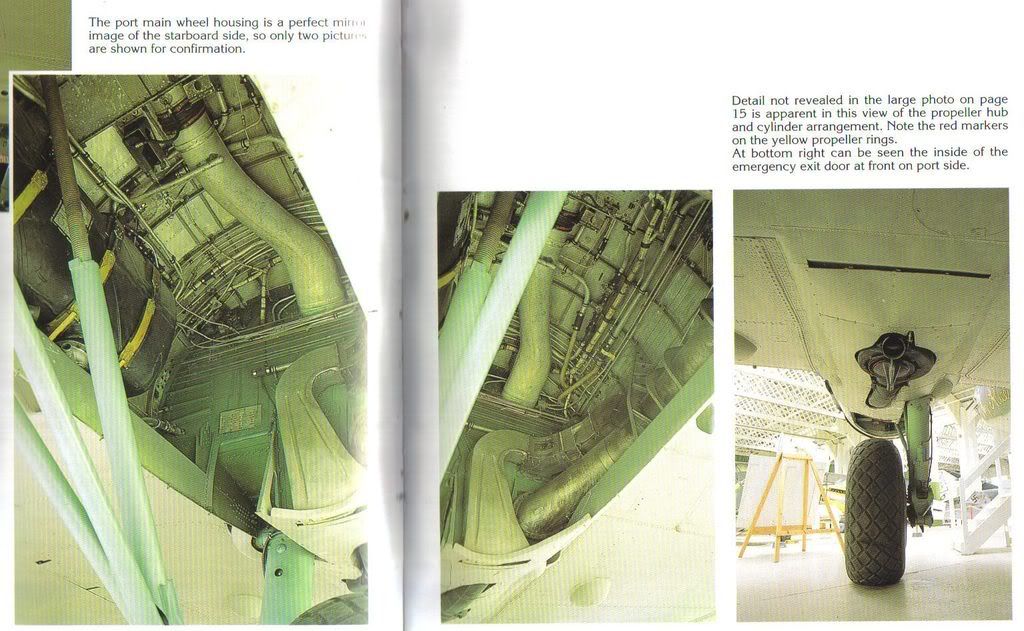Does anyone know the color of the insides of the engine cowlings on a B-17? Perhaps interior green or green zinc chromate? Or, if the plane were in natural metal and not olive drab, would they also be natural metal? Thanks.
I painted mine green zinc chromate on my R-M B-17. Mine was the olive drab “chowhound” though but i’m thinking the interior colors for the NMF ones are the same.
Many years ago I found a truck load of parts from a B-17 in a junkyard about 15 miles from where I live. The Flying Fortress had been on display at the Laconia, NH Airport in 1946. It had been vandalized and the airport authority decided to get rid of it a year or so later. It had a natural metal finish with the interior painted zinc chromate green. The parts included the turbochargers. I bought all the parts and donated them to the Collings Foundation which used some of them to rebuild their B-17 after it crashed in Penn.
It also depends on who built the aircraft: Boeing, Douglas, or Lockheed-Vega. Some might have it some might not.
Many of the pictures I have seen show that the interior of the engine cowlings as being painted interior green (or similar green color) or (apparently) bare metal. The earlier E, F and G models that came off the line painted in the OD/NG scheme probably all had the interiors painted. As the war progressed, and the camo paint scheme was no longer used, I am sure manufacturers and the USAAC figured painting the interior of the cowls wasn’t necessary either.
I have seen pics of the B-17G “Sally B” at the Imperial War Museum at Duxford, and it appears as though the interior cowls and most of the wheel wells were not painted. Here’s a look at the wheel wells on that a/c (from Verlinden’s Lock On #24 Aircraft Photo File B-17G); sorry for the picture orientation. (NOTE: She was restored by the IWM, so this is not 100% exact from WWII.)

The color is a little off from the scan, but the “roof” of the wheel wells is natural metal, but the rear bulkhead is interior green.
As with anything near a large motor or engine (especially a radial!), the bare metal was not shiny at all, discolored by the heat and nearly always dirty and greasy.
EDIT: In this same book, I did find a pic of the #4 engine nacelle and if you look close, you can see the interior of the cowl is natural metal (page 7). I’d scan it, but I don’t think it would show.
Working in the industry, we have the majority of the times applied Zinc Chromate as a primer when rebuilding sheet metal airliner structures even today, so it would be an accurate assumption that ZC was commonly utilized by Boeing built aircraft at least.
IMHO the right color is black, it’s a pretty dirty environment around those radials.
 only as an example.
only as an example.
My answer is zinc chromate green. That being said, someone had an article here, I read it yesterday, about the use of zinc chromate during the war. There were many variations of the shading of the zinc chromate so it really does’nt matter what exact shade you use. And yeah that is a pretty dirty enviroment around those radials, so go with either zinc chromate or interior green with weathering wash to dirty it up in the cowls. Most importantly…Have fun!
Okay, great! It appears everyone has answered my question quite thoroughly. Thank you all! I’ll go with green zinc chromate; that seems to be the majority opinion. BTW, it’s a G model.
Hey, thanks for stepping in and saving the B-17 parts, Gordon. A fine thing to do!
Yeah, I agree. Once there gone, there gone. Nice to see someone make that effort to save them.
Good SAVE indeed!
Our museum got a turbo-supercharger (complete assembly) for a B-24 in the same exact manner.
DANG!~ Those used to be top-secret equipment!
With radials, if it ain’t leaking oil, the engines are empty.
I gotta agree w/ bondoman - They might be painted zinc chromate green - but that’s not what you’re gonna see when you look inside. At a local air show in Geneseo NY I’ve walked underneath the wing of a B-17. There’s a heavy film of oil over a very wide area of the wing’s bottom and top surfaces. I bet its alot heavier within the cowling.
But when you hear the roar of those 4 engines - Man that’s impressive !
Chris
Not to go off topic but…I love that airshow!!! My dad took me and my brother’s every year, I’ve taken by son up there now since 2005, and I’ll be up there again this year!!!
I had a beer with my buddy Airman Jim this evening and posed the question to him, not along the lines of paint because his a/c didn’t have any in the locations we’re discussing, but on account of lubricants.
He was a second engineer/crew chief on C-97s, C-124s, and much less interesting noisy stuff later on.
The C-124 had an oil reservoir that held 40 gallons, for each engine. It had a rheostat-float arrangement in it, and that needed constant attention in case of failure. He’s not sure but thinks 40 gallons equalled about a round trip to Japan, which at 200 miles per hour took maybe 30 hours, at total loss thats a little more than a gallon an hour. He tells me that to open the cowling, which was a petal affair, cost a set of coveralls.
For the Pratt 4360.
American Radials are JUICY! The leak. They ooze…
Wanna invest in giant cookie trays for all those ‘parked’ museum displays?
B-29s had 60 gallon oil tanks for each engine. Great for cooling… or furious fires!